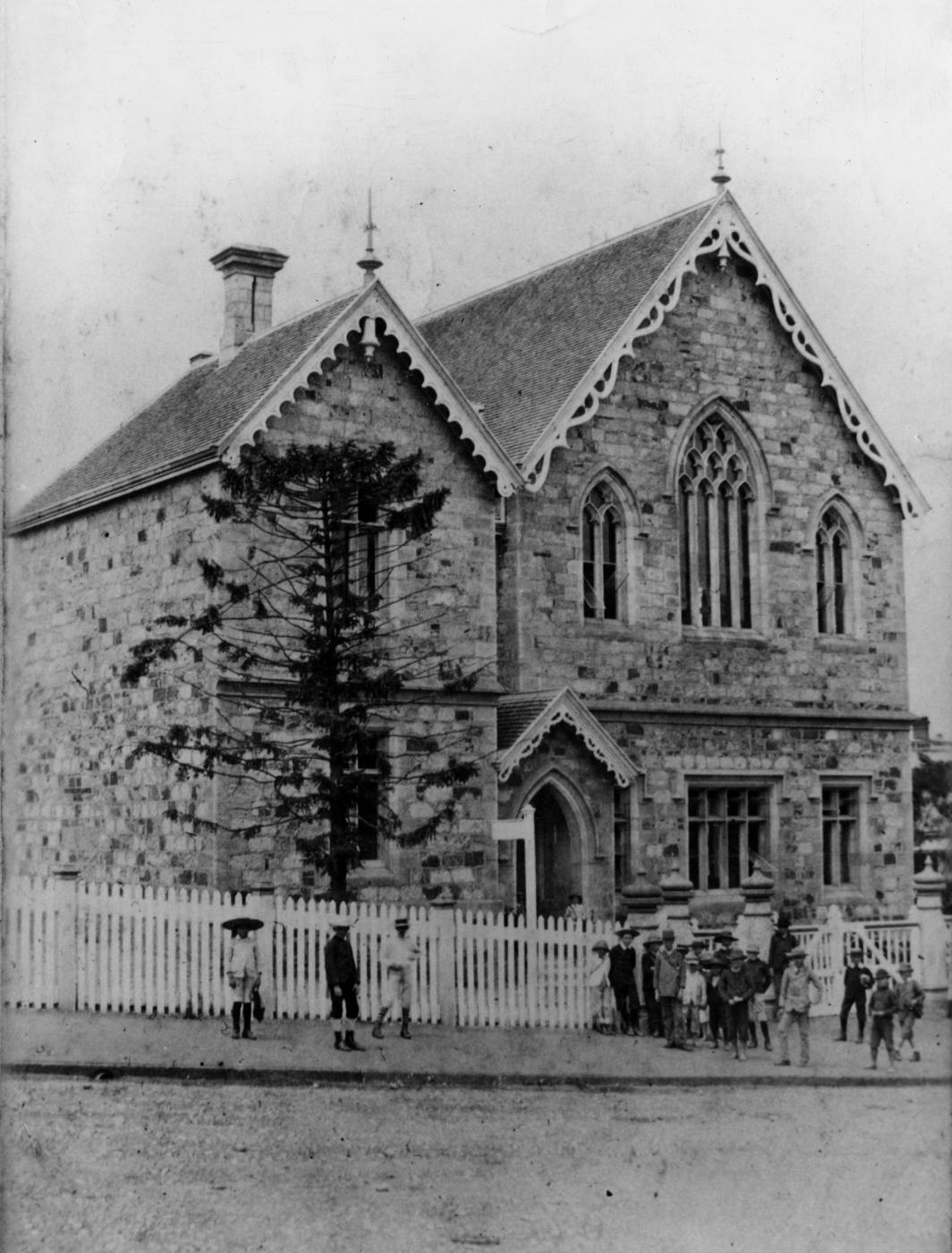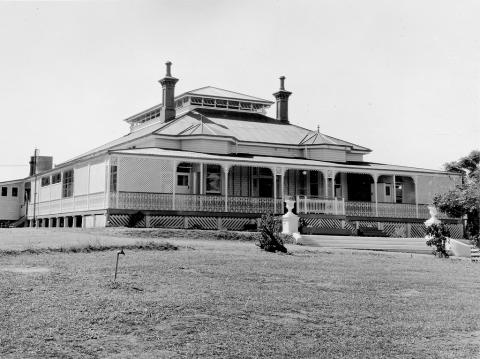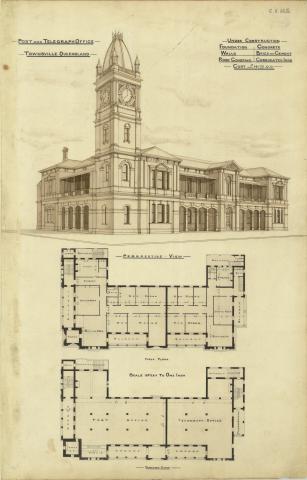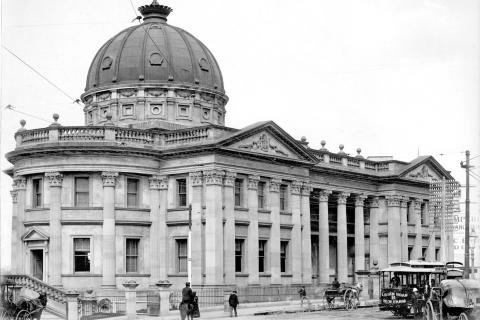
- News of the day
-
Queenslander, Saturday 26 September 1874, page 9
The Brisbane Normal School.
THE Brisbane Normal School has for many years been a most popular institution with all classes of parents. On Monday afternoon we paid a visit to the girls' department, which is under the charge of Miss Berry. The first or senior class was just re-assembling after recess at the time of our visit, and the quiet and orderly manner in which the resumption of study was effected was very noticeable. The girls took their places in line, and at the word of command steadily marched to their seats in re-gular order. The senior class was then exercised in the geography and history of England, and the promptitude and general correctness of their replies spoke very highly for the efficiency of the system of teaching. Viva voce instruction ap-pears to enter largely into the scheme, each pupil being kept on the alert as none can tell when she may be singled out to answer any question put. Written exercises are, however, not neglected. A series of questions are written upon the blackboard, and are copied by the pupils, who then proceed to write the corresponding answers. From the examples shown to us we should judge that the questions are most intelligently put, and are of a nature to draw out whatever ability the pupils may possess. Besides a mere effort of memory, scope is given for the development of reasoning and the display of ability in composition. Some of the books were in the highest degree creditable. Without being exactly very elaborate or deeply thought-out essays, several of the replies to the more expansive questions were very neat little compositions, crisply put, and affording evidence that the young brain had been turning the subject over. The mechanical details of writing and neatness were faultless to any eyes less critical than a School Inspector. The room in which this class is held appears excellently adapted for its purpose, being lofty and well ventilated. The girls are seated on tiers of forms higher and higher as they recede from the floor, which is paced by the teachers and pupil teachers. An upper story in the same building is appropriated to a junior class, and seems by no means so healthy a room. Although lofty and lighted by numerous windows, it owes its loftiness principally to the high pitch of the roof, which necessarily presents to the sun an enormous heating surface. By opening a couple of large windows in the eastern and western gables, we conceive a very sensible difference in the comfort of the room could be made. Such an alteration presents to all appearance no architectural difficulty whatever. In its present condition the vault of the roof must in summer be nothing more than a large retort full of heated air unable to find vent. In this schoolroom the same quiet order reigned as among the elder girls. To the west of the first classroom, and communicating by a door, is the older building of one room, in which another class—the third, we believe—is held. 'This is a one-story building, and by no means a bad room, although the later erection, to some extent, deprives it of the benefit of the ordinary summer sea breeze. At the rear of these classrooms, which all front Adelaide-street, a separate building, of recent date, is allotted to the youngest children. This we found densely thronged with little mites of boys and girls scarcely out of their babyhood, but all learning something, and kept in wonderful order. One class of these babies who were seated on benches gradually rising half-way up the walls, sang a cheerful little song, descriptive of the occupation of the husbandman, each verse being ac-companied by appropriate gestures. The little creatures piped their shrill treble, and sowed, and reaped, and threshed imaginary grain with every sign of enjoyment. While on the subject of singing, we learnt with regret that the tuition of music to the elder girls has been sus-pended, the result of past experiment not having been satisfactory to the Inspector, Mr. Ewart. This seems somewhat to be deplored, as vocal music is not difficult to learn, and a moderate amount of proficiency would suffice to introduce a charming amusement into numerous households. Among so many young girls, some voices of more than average merit could hardly fail to be discovered, and there would be very few indeed incapable of taking effective part in glees and madrigals. We were much struck with the quickness and accuracy in mental arithmetic dis played by one class of little seven-year-old dots of girls, who added up a tolerably long list of numbers recited to them with startling speed, and in the case of a very large percentage with entire accuracy. The staff of teachers appears to us, as far as a brief visit furnished opportunity for forming a judgment, to deserve the highest credit for the manner in which the school is conducted and knowledge imparted. The name of the headmistress, Miss Berry, has become, after some thirteen years occupation of the post of teacher in Queensland, a household word in many families where young matrons have passed under her care, and hold her in affectionate remembrance. Altogether, the impression given by a brief view of the institution is, that it would be a credit to any community in any country.
- Background
-
Brisbane Central Boys' School (Number 1) has its origins in the National School opened in Brisbane in 1860. In August 1860, the boys were separated from the girls. In 1862, the National School became officially known as the Normal School when it was reorganised to include a training school for teachers.
The name Brisbane Central Boys' School would appear to have come into usage about 1880 when the Annual Returns give this name. The Admission Registers from 1889 also use the name Brisbane Central Boys' School. However, the names Brisbane Central Boys' School and Brisbane Normal Boys' School were used interchangeably both in official documents and by the wider public for many years.
The school closed at the end of 1919 and reopened at the beginning of 1920 as the Brisbane Central State School when the secondary department of the Girls school was amalgamated with the secondary department of the Boys school to form the Brisbane Junior State High School. The new Central School was a mixed primary school formed from Brisbane Central Boys' and Central Girls' and Infants' Schools.
In 1922, it became the Brisbane Central Practising School until 1927, when the buildings were demolished and the Head, staff and pupils were transferred to the Leichhardt Street State School. (The latter school was renamed Brisbane Central School in 1954.) The Normal School was demolished at the end of 1927.
/153.0253937,-27.4667845,7/450x450@2x.png?access_token=pk.eyJ1IjoicXNhLWRpc2NvLXFsZCIsImEiOiJjamJmdTgyZXEyeWNjMnlxZm8xcmtieHgxIn0.lmT9J5tTPKGuuccQgCVSAg)



